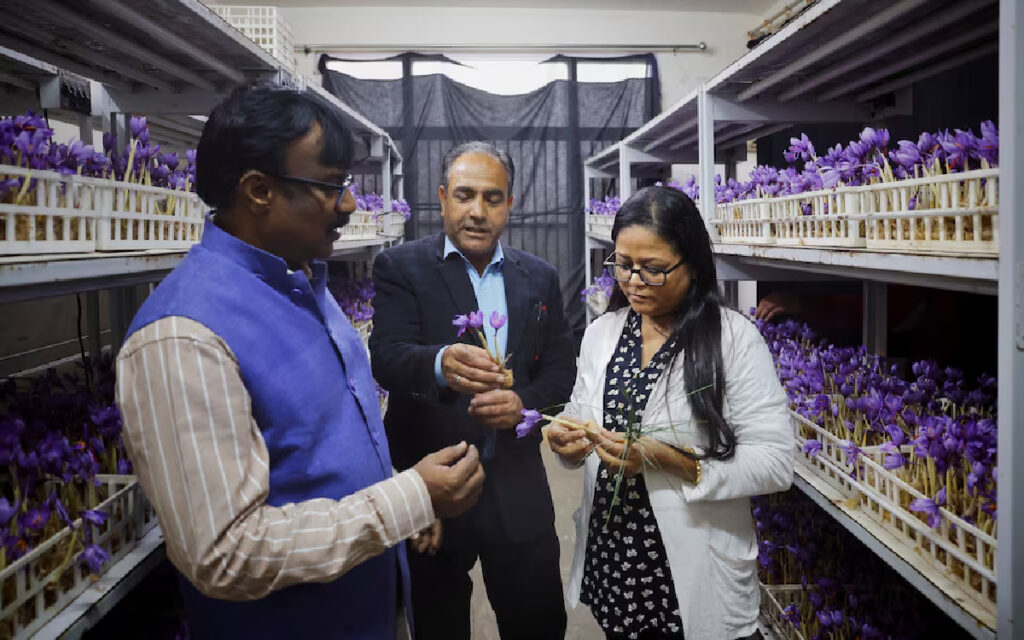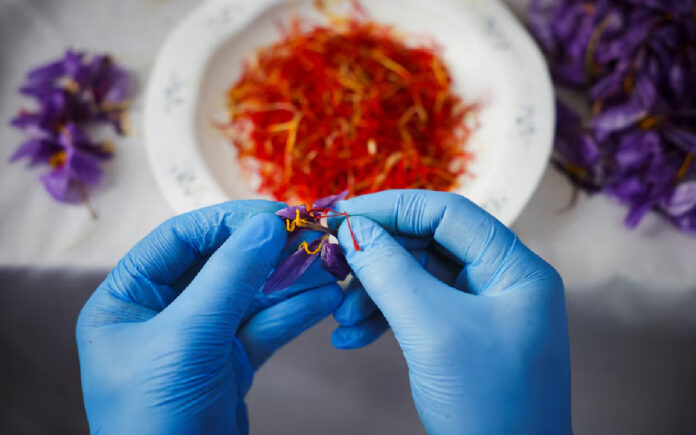Pampore: Nestled in the picturesque valley beneath the snow-clad Himalayas, Pampore in Indian-administered Kashmir is renowned for producing the world’s most expensive spice—saffron. This small town accounts for most of India’s saffron, the world’s second-largest producer after Iran.
During October, Pampore’s fields transform into vibrant purple carpets as crocus flowers bloom. From these delicate flowers, saffron’s fragrant red strands are painstakingly harvested by hand, destined for use in gourmet cuisine, perfumes, and dyes.
“I am proud to cultivate this crop,” said Nisar Ahmad Malik, a traditional farmer who cherishes the rich color, aroma, and heritage of his ancestral saffron fields.
Climate and Urbanization Threaten Saffron Heritage
While traditional farming methods persist, Pampore’s saffron fields face growing threats from climate change and urbanization. Rising temperatures, irregular rainfall, and rapid development have significantly impacted production. According to government data, India’s saffron yield has plummeted from 8 metric tons in 2010-11 to just 2.6 metric tons in 2023-24.
In response, the Indian Council of Scientific & Industrial Research (CSIR) has emphasized the need for innovative solutions to sustain saffron farming.
The Rise of Indoor Saffron Cultivation
One promising initiative involves cultivating saffron indoors under controlled conditions. This method, championed by scientists like Dr. Bashir Ilahi at the Sher-e-Kashmir University of Agricultural Sciences, uses nutrient-rich tubes to grow crocus plants.
“Growing saffron in a controlled environment demonstrates temperature resistance and significantly reduces the risk of crop failure,” said Dr. Ilahi, surrounded by rows of flowering crocus plants in his laboratory.

Local farmers, including members of the Kashmir Saffron Growers Association, have begun embracing this innovation. “It is an amazing development,” said Abdul Majeed, the association’s president, who has successfully cultivated saffron indoors for years.
Also Read | South Africa Faces Backlash Over Fatal Crackdown on Illegal Miners
A Call for Greater Support
Despite the potential of indoor cultivation, growers like Manzoor Ahmad Mir believe more governmental support is needed. “The government should promote indoor saffron cultivation on a much larger scale as climate change is affecting the entire world, and Kashmir is no exception,” he urged.
Also Read | Italy, Albania, UAE Unite for €1 Billion Adriatic Energy Link
Preserving a Priceless Legacy
As Pampore’s fields face an uncertain future, the shift toward indoor farming offers hope for preserving Kashmir’s storied saffron heritage. With innovation and support, this prized spice may continue to bloom in the face of climate adversity.



